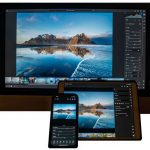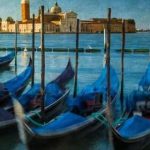
Look ma, no Photoshop!
I can tell you from lots of experience that the glory days of advertising yielded some pretty far-fetched campaigns; some of them made me laugh out loud when I was sent a rough layout of what the art director wanted me to shoot.
The process of getting the final advertisement into a radio spot, a television commercial, a magazine, newspaper, or on a billboard was (and still is) daunting at best. If the advertising agency was one of the larger ones it had to go through several levels before a sketch was offered to a group of photographers for a competitive estimate.
First, several teams made up of a writer and art director create a campaign. Usually the writer comes up with the concept and writes the copy, then the art director comes up with the visual. Each of these teams makes a presentation to the client in a big meeting in the conference room.
The client picks the campaign and then it’s off to the races. First it will be submitted to different focus groups that will evaluate the product, service, concept, advertisement, idea, or packaging. Then if there opinions are positive the campaign begins and the money starts pouring out.
I’m telling you all this to let you see how sometimes a very stupid idea can make it all the way to your eyes and ears!!
I was doing a campaign for GATX, a leading railcar leasing company based all over the world. My job was to paint one of their railcars, then add the lights to make it look like an ambulance (are you with me so far???) and have it appear as if it were speeding down the track and coming to the rescue.
If this same photo was done in today’s digital world, it would have been easy to create in the computer. As I tell my online students that take my Stretching Your Frame of Mind classes, when I was producing these photographs Adobe was a type of house in the southwest part of the country.
I’m not trying to repeat the proverbial phrase our parent’s said…something about walking three miles in a blinding snowstorm to school. I say to my fellow photographers to meet the challenge and try to get as much in the camera as you can, and let clicking the shutter be the final step in capturing your idea; then tweak it in either Lightroom or Photoshop.
I digress.

So here’s how I did it all in the camera:
After having it painted by a close friend I always used to solve any problems, and make anything in the world I asked for, we waited until the blue hour after the sun had set.
A frame was made for the headlights and then lit by a generator. To get all the lights to look the way they did, we smoked the area up with a fog machine.
To create the right exposure ( Kodachrome 25) and make it look like it was screaming down the track, I open the shutter to record the sky and the all the lights. Then, during the time the shutter was opened, we moved the railcar backwards to create the feeling that it was moving forward.
Nothing to it!!
-BPSOP Instructor: Joe Baraban
Joe Teaches:
















